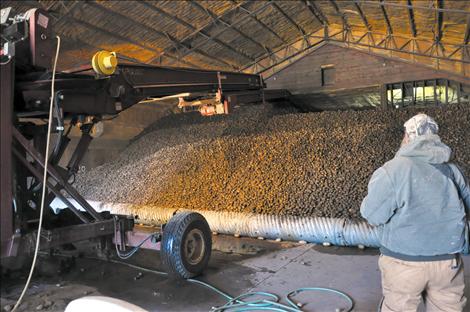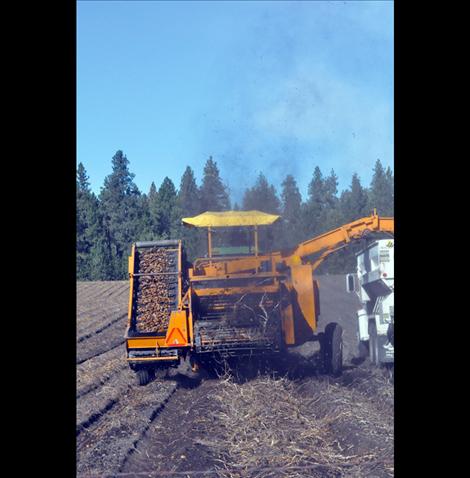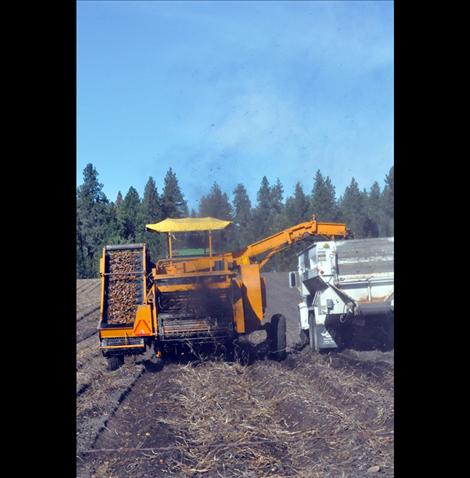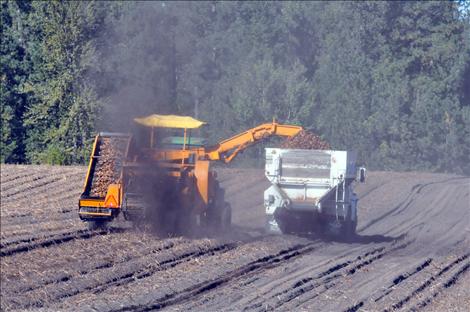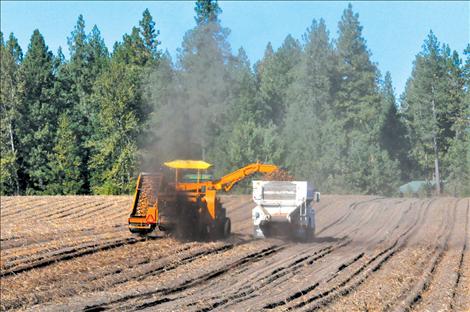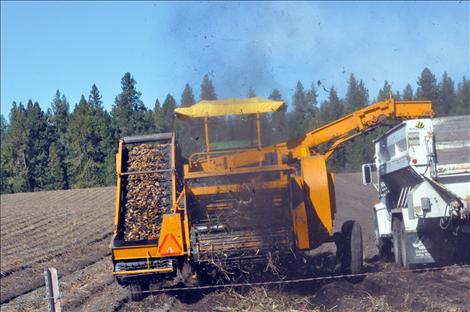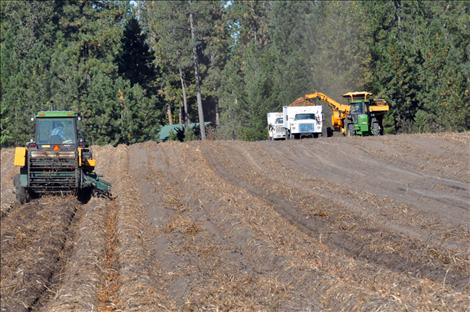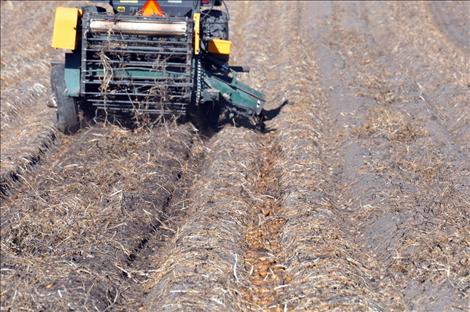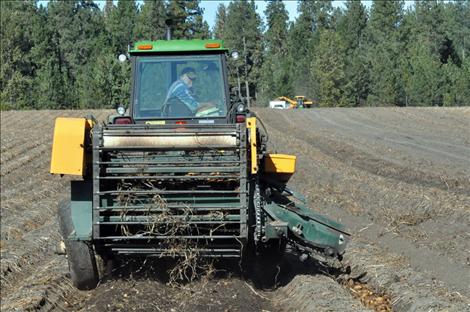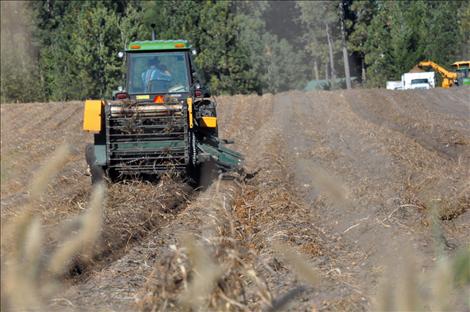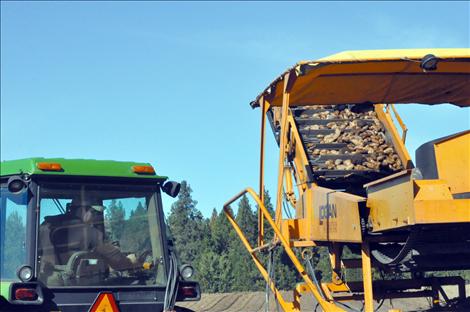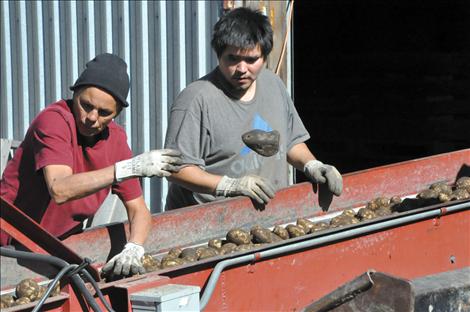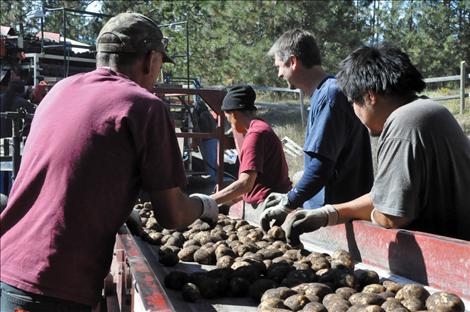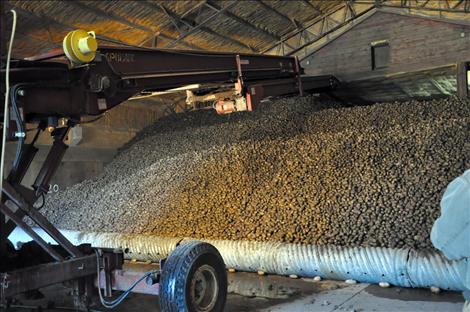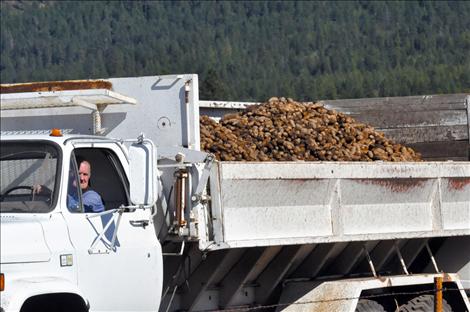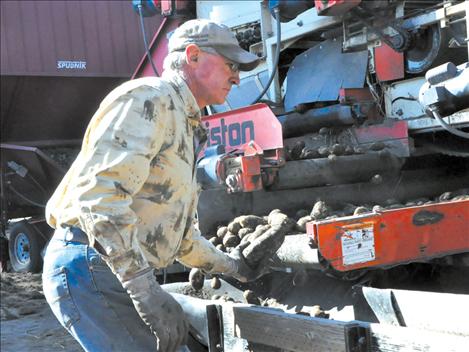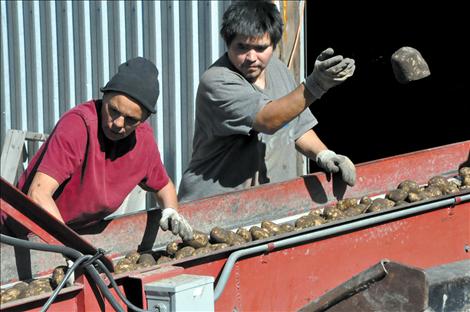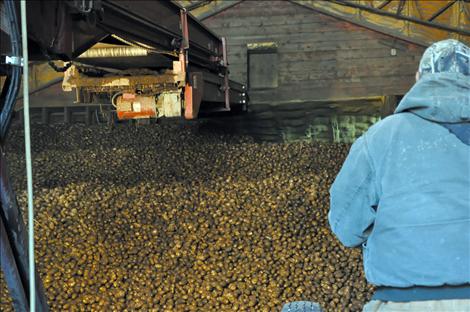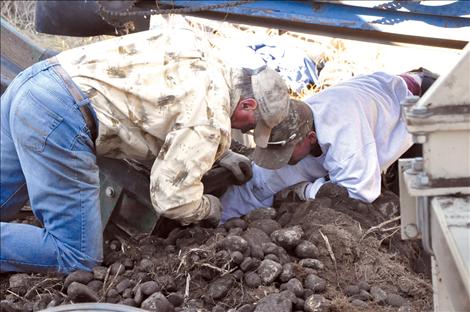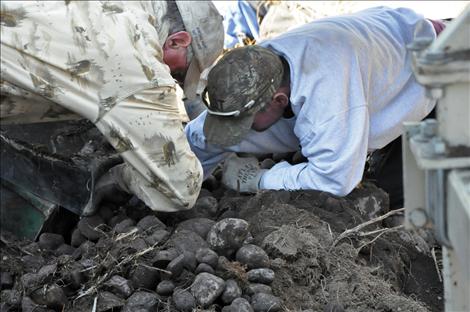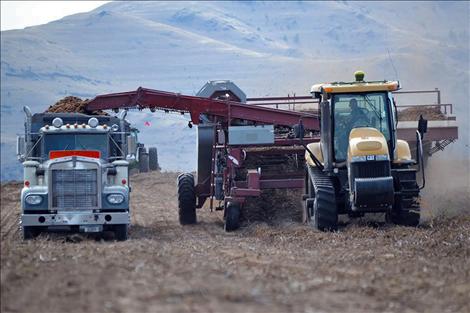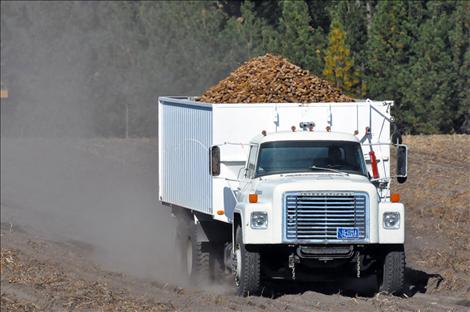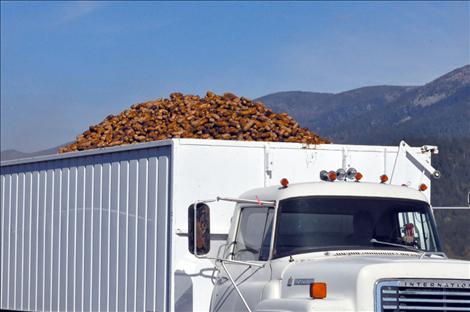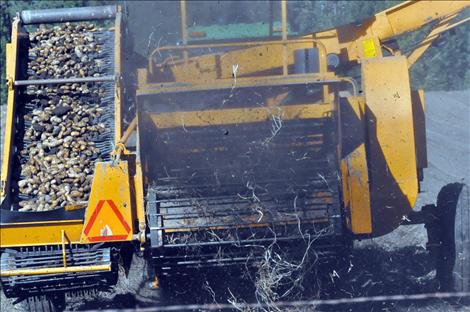Later, tater: Local potato farmers tuck spuds away for winter
Hey savvy news reader! Thanks for choosing local.
You are now reading
1 of 3 free articles.
A last few humming harvesters made their way slowly over the Mission Valley fields last week, deftly cutting open the bowels of the earth and pulling potatoes from the ground.
The seed potatoes were stored and left to sleep in climate-controlled cellars meant to keep them from sprouting until early spring, when they will be shipped to the Columbia River Basin and planted for a final growth that will eventually end up in the bellies of people across the country.
The long hot summer provided an ideal environment for the seed potato growers this year.
“It was an outstanding year for us,” said Reed Tobol, of Tobol Farms, which lies 10 miles to the west of Ronan and planted 130 acres of Umatilla Russets this year. “We had probably the best yield we’ve had in years.”
Ed Starkel said the 600 acres of potatoes he planted in the valley did well also.
“It was hot and dry,” Starkel said. “That is exactly what you want.”
Starkel has been planting his own potatoes since 1984, a year after his father — who was also a potato farmer — stopped growing spuds after several decades. The harvest is a family affair. When Ed and his brother Roger, who planted approximately 200 acres of potatoes, combine resources during harvest to dig and store the potatoes, brothers Bob and Dave join in and help drive trucks and operate machinery.
The potatoes that were planted in the spring are dug by a machine that processes eight rows at a time and separates mangled plant carcasses from the potatoes. As the plants are thrown behind the machine, it creates a cloud of dark dusk and debris. The potatoes ride a conveyor belt that runs up the side of the harvester and onto an arm that stretches over a dump truck that collects the potatoes and a fair number of large stones that make it through the plant separation process.
Drivers take the truck to a potato cellar that can be a half a mile to 15 miles away from the field.
When the truck arrives it feeds the potatoes onto a series of conveyors that run through devices meant to separate out rocks. A few of the stones make it through the process and are removed by workers who pick them out along the conveyor belt. Once the rocks are taken out, the potatoes are moved to the end of the conveyor and are placed by a long mechanical arm into a 16 feet tall spud mountain.
“You have to do it gently,” Starkel said. “Potatoes bruise easily.”
Starkel and his brother have 10 potato storage facilities across the Mission Valley. The facilities have a piping system that allows the farmers to monitor the humidity levels in the cellar. Temperature is also kept at around 38 degrees Fahrenheit.
“We don’t want them to sprout,” Starkel said.
In the springtime the potatoes are shipped mostly to the Columbia Basin in Washington, with a few destined for Idaho or North Dakota. Most of the 160,000 of Starkel’s sacks that weigh 100 pounds each will grow other potatoes that will become French fries and dehydrated potatoes.
“Feel free to supersize your fries,” Starkel joked.
At harvest, farmers take a sample from each of their fields and send them to Hawai’i where they are grown and examined.
“It provides a good idea of what the health status of those potatoes are going to look like for that year,” said Nina Zidack, director of the Montana State University Potato Seed Certification program. “If you want to do it in the winter, you have to have somewhere warm to grow them. You have to have the information by the time your customers want the potatoes next spring.”
For more than 75 years, the certification program has monitored Montana potato fields for diseases, Zidack said. If the potatoes meet the stringent standards, they are certified as seed. More than 50 growers across the state participate in the program each year. Most seed potatoes are grown by families who have been in the business for decades, Zidack said.
“You don’t just get into it,” Zidack said. “It’s a very, very complicated type of farming. It takes a very high level of management because you’re not just concerned about growing the crop. You are also concerned about very strictly controlling all the diseases that are related to the crop. A seed crop is held to a higher standard than crops for fresh market or processing.”
The tiniest of viruses, fungi or bacteria can spell disaster for the crop. Three years ago, late blight, the same culprit that caused the Irish potato famine, struck Ronan and Polson farmers.
“Through very close monitoring of the weather and farmers employing very strict fungicide programs, we haven’t seen it since 2010,” Zidack said. “Before that we hadn’t seen it for 10 years prior.
It’s normally not a real huge issue, but it can be.”
Wet weather promotes the diseases, and frost can cause the potatoes to rot. Hail can squash the plants. For all their hard work and dedication, farmers are always left to mother nature’s good graces to some degree, according to Reed Tobol.
The Tobol family has been farming potatoes in Mission Valley for 30 years, since family patriarch Dave Tobol moved to the area from Billings. His son Steve runs the farm with wife, Tana. Reed, 22, and Thane, 19, provide labor for the completely irrigated operation that includes 500 acres of wheat and 80 acres of alfalfa.
This was a good year at Tobol Farm — something that hasn’t happened in six years. A chemical drift from a neighboring farm caused the fields to be left empty for a few years. Once the field was safe to farm again, the Tobol family spent two years building a whole new customer base.
“In this business it’s hard to get a customer base,” Tobol said. “It takes years and a lot of building relationships.”
Without springtime buyers, potatoes have to be thrown into a landfill to rot, or if the farmer is lucky, sold as feed for livestock.
This season, the Tobol’s were one of the first farms to have all of their potatoes harvested. With high yields and anticipated high demand for the Umatilla Russets that were grown, things are looking up.
“It was just a really good year for us,” Tobol said.















